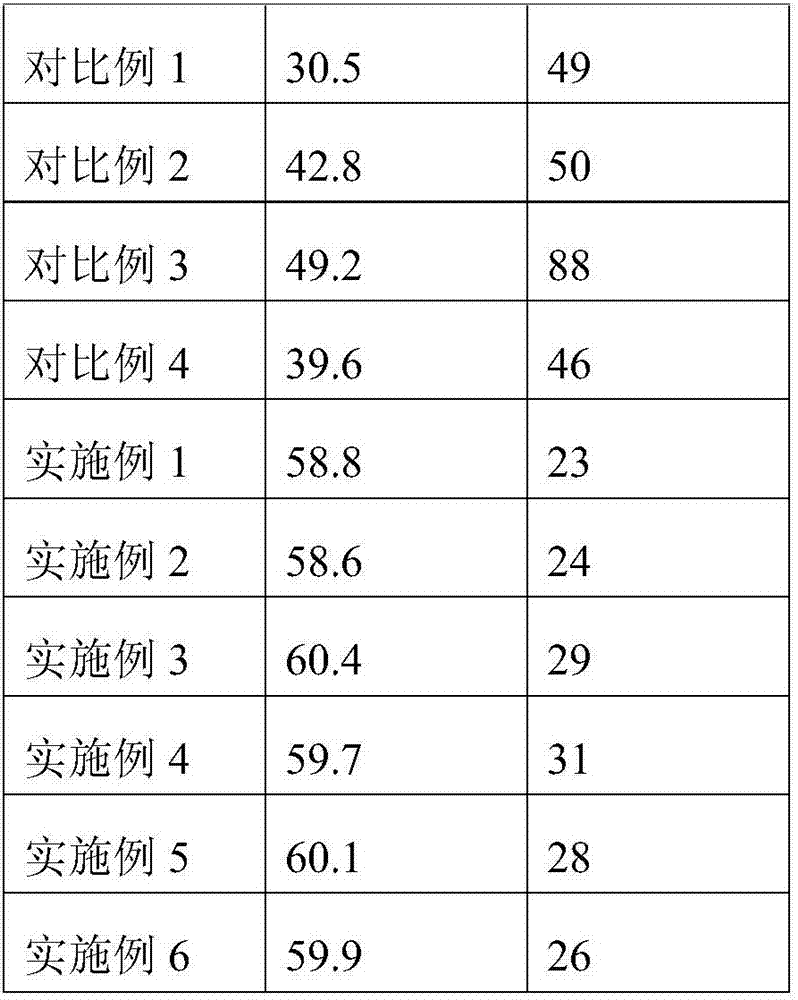Method for extracting plant selenoprotein from selenium-rich rice
A technology for plant selenoprotein and selenium-enriched rice, which is applied in the fields of peptide preparation, chemical instruments and methods, organic chemistry, etc., can solve problems such as the loss of selenoprotein, and achieve the effects of increasing content, improving extraction efficiency, and improving extraction rate.
- Summary
- Abstract
- Description
- Claims
- Application Information
AI Technical Summary
Problems solved by technology
Method used
Image
Examples
Embodiment 1
[0029] 1. Preliminary preparation:
[0030] Preparation of amylase preparation: in parts by weight, mix 100 parts of fresh corn and 100 parts of deionized water, put them in a reactor, and after homogenization, introduce carbon monoxide at a rate of 0.01mL / min. Air for 10 minutes, centrifuge at a speed of 5000r / min for 5 minutes, take the supernatant and adjust the pH value to 5, add 100 parts of ethanol for precipitation, after standing for 6 hours, dry the precipitate to obtain an amylase preparation.
[0031] The substances prepared above are used in the following method for extracting phytoselenoproteins from selenium-enriched rice.
[0032] 2. a method for extracting plant selenoprotein from selenium-enriched rice, comprising the following steps:
[0033] (1) Pretreatment: in parts by weight, 200 parts of selenium-enriched rice was soaked in 1000 parts of 2% acetic acid solution by mass fraction for 4 hours, ground into a slurry, added 1 part of amylase preparation, and ...
Embodiment 2
[0037] 1. Preliminary preparation:
[0038] Preparation of amylase preparation: in parts by weight, after mixing 100 parts of fresh corn and 105 parts of deionized water, put them into a reactor, and after homogenization treatment, carbon monoxide was introduced at a rate of 0.012 mL / min. Air for 13 minutes, centrifuge at 6000r / min for 6 minutes, take the supernatant and adjust the pH value to 5.5, add 140 parts of acetone for precipitation, after standing for 6.5 hours, dry the precipitate to obtain amylase preparation.
[0039] The substances prepared above are used in the following method for extracting phytoselenoproteins from selenium-enriched rice.
[0040] 2. a method for extracting plant selenoprotein from selenium-enriched rice, comprising the following steps:
[0041] (1) Pretreatment: In parts by weight, 200 parts of selenium-enriched rice is soaked in 1000 parts of acetic acid solution with a mass fraction of 2.5% for 5 hours, ground into a slurry, and after addin...
Embodiment 3
[0045] 1. Preliminary preparation:
[0046] Preparation of amylase preparation: in parts by weight, mix 100 parts of fresh corn and 110 parts of deionized water, put them into a reactor, and after homogenization, carbon monoxide is introduced at a rate of 0.015 mL / min. Air for 14 minutes, centrifuge at 6000r / min for 7 minutes, take the supernatant and adjust the pH value to 6, add 190 parts of methanol for precipitation, after standing for 7 hours, dry the precipitate to obtain amylase preparation.
[0047] The substances prepared above are used in the following method for extracting phytoselenoproteins from selenium-enriched rice.
[0048] 2. a method for extracting plant selenoprotein from selenium-enriched rice, comprising the following steps:
[0049] (1) Pretreatment: In parts by weight, 200 parts of selenium-enriched rice is placed in 1000 parts of selenium-enriched rice and soaked in 4% acetic acid solution for 4.5 hours, ground into a slurry, and after adding 2 parts ...
PUM
 Login to View More
Login to View More Abstract
Description
Claims
Application Information
 Login to View More
Login to View More - R&D
- Intellectual Property
- Life Sciences
- Materials
- Tech Scout
- Unparalleled Data Quality
- Higher Quality Content
- 60% Fewer Hallucinations
Browse by: Latest US Patents, China's latest patents, Technical Efficacy Thesaurus, Application Domain, Technology Topic, Popular Technical Reports.
© 2025 PatSnap. All rights reserved.Legal|Privacy policy|Modern Slavery Act Transparency Statement|Sitemap|About US| Contact US: help@patsnap.com


